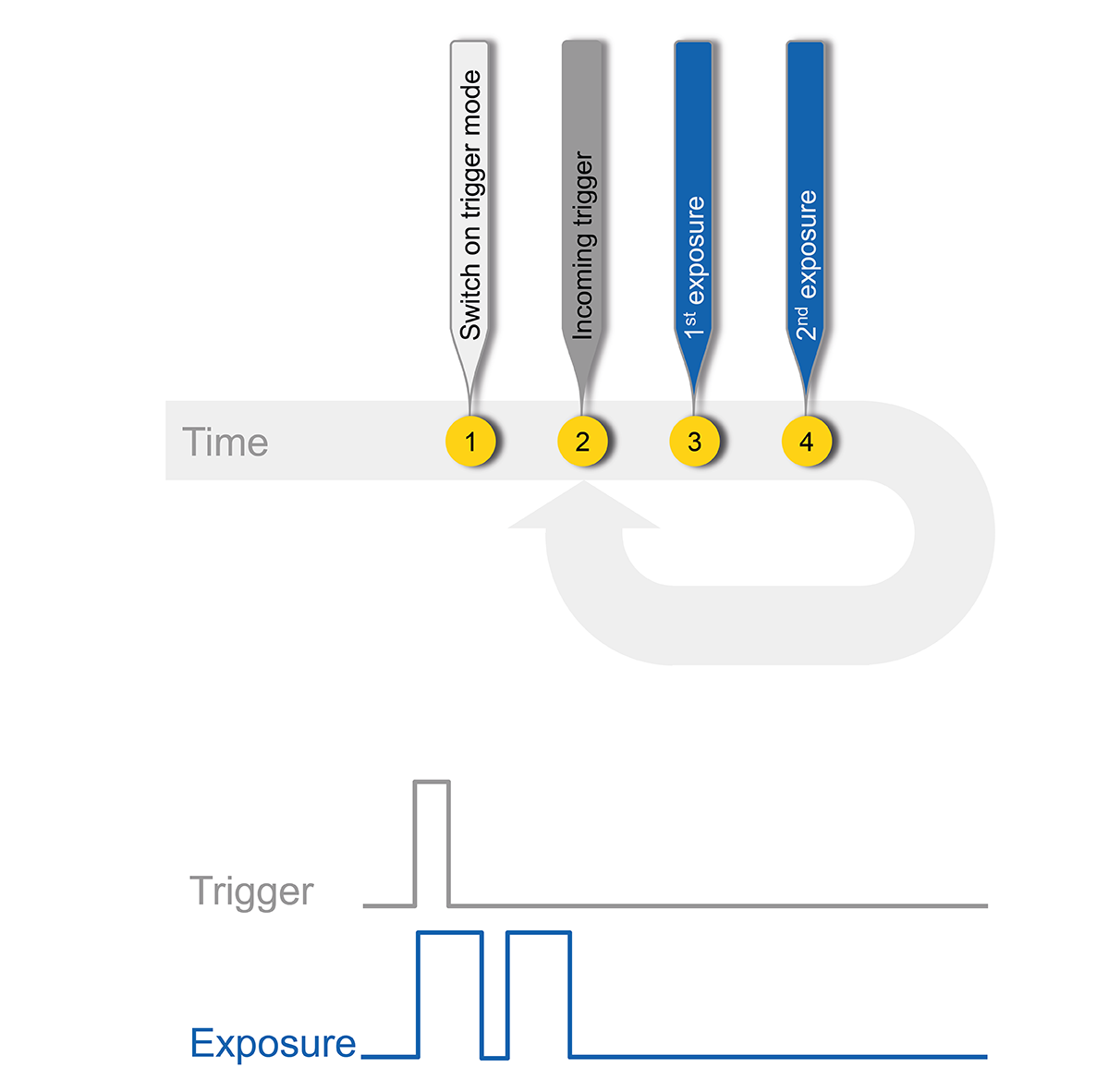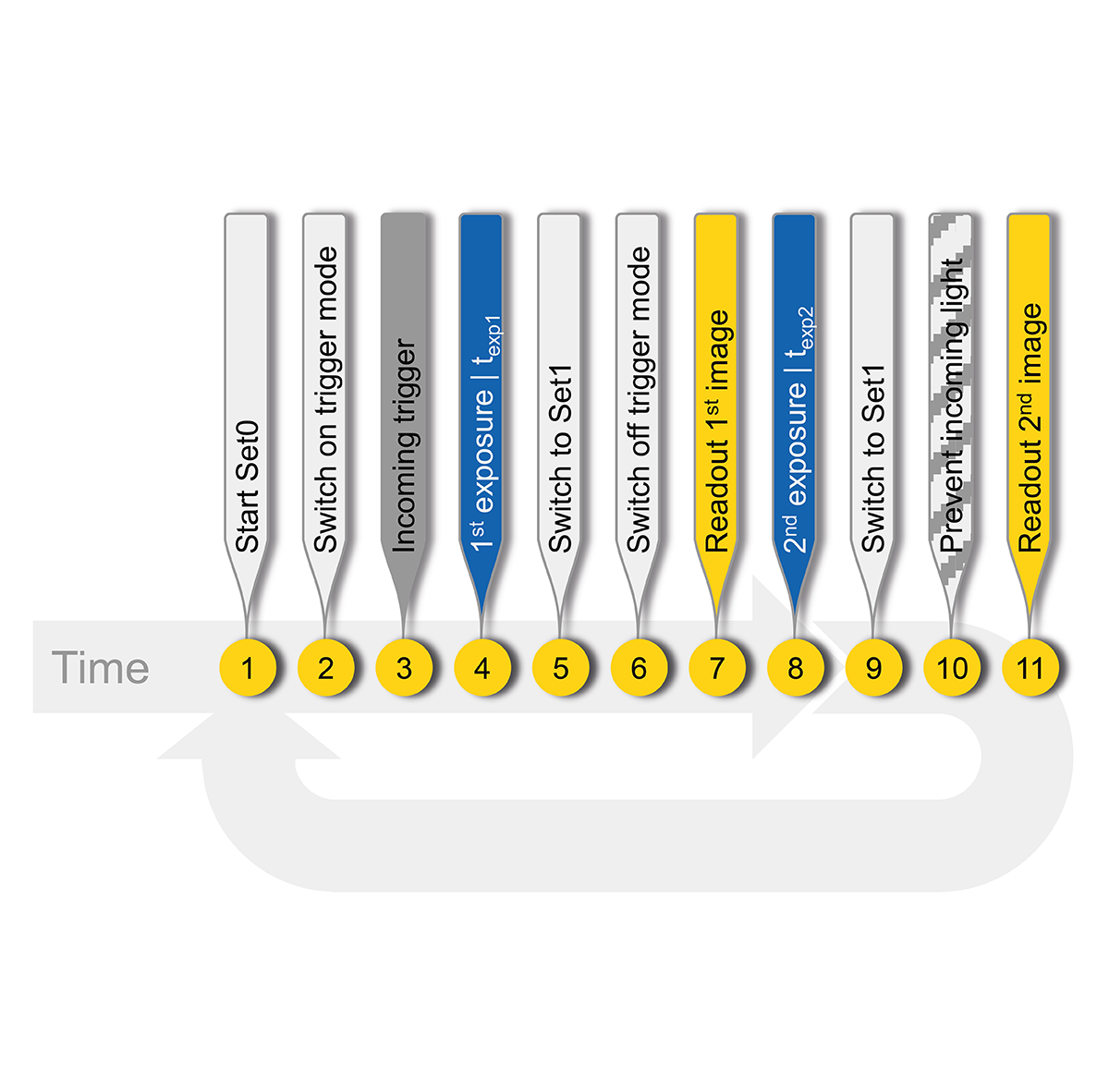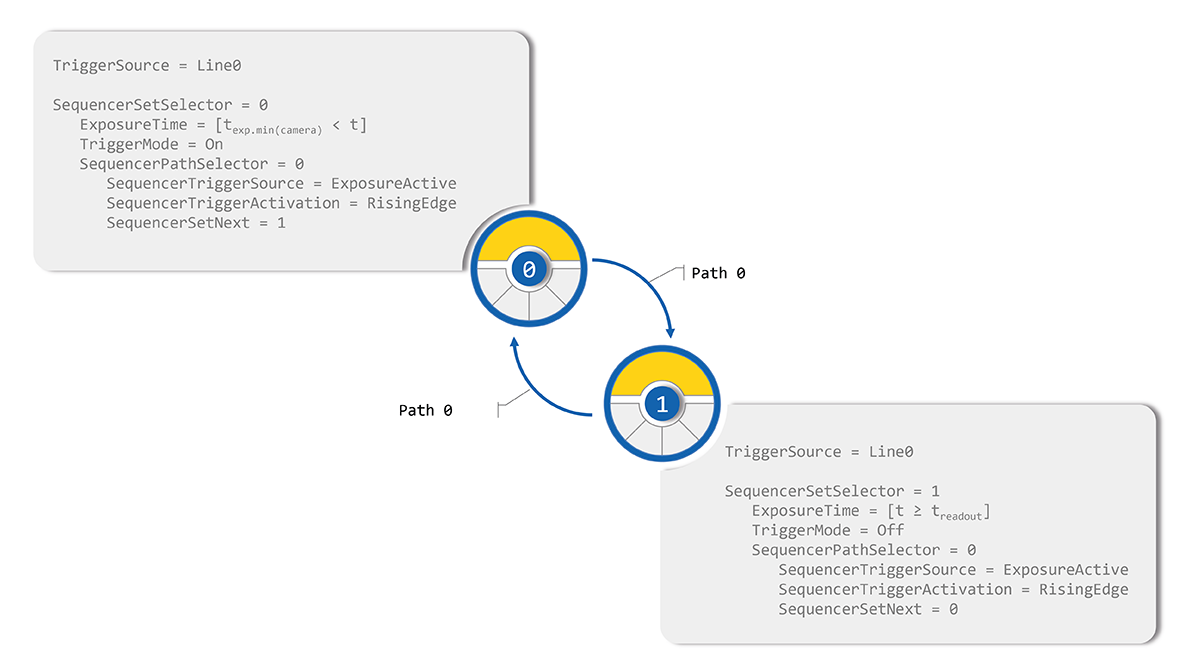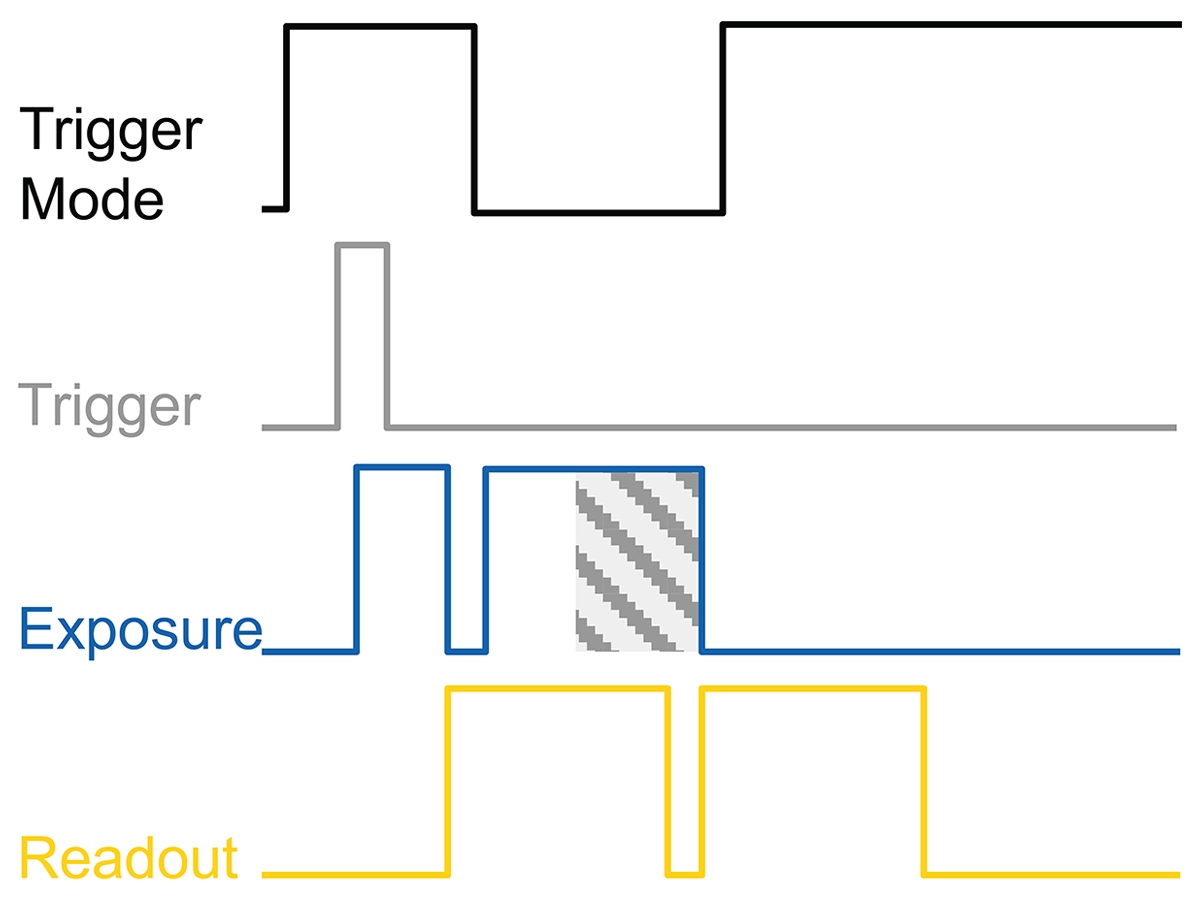Double shutter
The double shutter allows for capturing two very shortly exposed images within a short interval.
Desired camera behavior

The theoretical approach is setting the camera to trigger mode and capturing two images with each incoming trigger signal at the same exposure time.
Technical constraints
The approach is based on flash lighting, meaning every image acquired is flashed and thus ambient light is suppressed.
“Very shortly exposed images” means the set integration time is shorter than the sensor’s readout time. Here, the configured 2nd exposure time needs to be equal or longer than the readout time.
To avoid sensor overrun the second short exposure requires a second short flash while eliminating at the same time any ambient light.
Sequencer procedure concept

Taking into consideration the sequencer basics and the technical constraints of the double shutter makes sequencer parameterization a lot more complex than originally expected:
- Since acquisition of the 1st image is hardware- triggered, the 2nd image must follow automatically and immediately at different exposure time, reason why two different sequencer sets are indispensable.
- The first set (Set0) contains the necessary parameters for the Trigger Mode configuration as well as the desired exposure time for the 1st image.
- The 2nd set (Set1) sets the camera back to free-running operation. The exposure time will be set to a value equal to or longer than the readout time.
- In addition, both sets need to provide sequence set and path related information.
Implementation
The sequence is expected to run at the incoming trigger, reason why a TriggerSource must be defined and why in the example Line0 was added.
First sequencer set
Set0 provides the sequencer- controlled camera features ExposureTime and TriggerMode which is activated.
Sequencer set and path- related features are:
SequencerPathSelector = 0
Defines the path for switchover to the next sequencer set. Here it is Path0.
SequencerTriggerSource = ExposureActive
Defines the internal or external signal that is used as sequencer trigger source, here the internal signal ExposureActive.
SequencerTriggerActivation = RisingEdge
Defines the signal status change triggering switchover to the next sequencer set. In the example it is the RisingEdge.
SequencerSetNext = 1
Defines which sequencer set is next in this path, in the example Set1.

Second sequencer set
Set1 contains the extended ExposureTime and switches the TriggerMode off. The sequencer set and path related features are:
SequencerPathSelector = 0
Defines the path for switchover to the next sequencer set. Use Path0 to go back to Set0.
SequencerTriggerSource = ExposureActive
Defines the internal or external signal used as sequencer trigger source, here the internal signal ExposureActive.
SequencerTriggerActivation = RisingEdge
Defines the signal status change triggering the sequencer set change, here the RisingEdge.
SequencerSetNext = 0
Defines the next sequencer set in the related path. Use Set0 to go back.
Result

The figure shows the resulting double shot as signal curves. Absence of-ambient light (grey shaded area in the exposure signal) in the final stage of the 2nd exposure leads to the desired camera behavior.
Related topics
Support
Please contact our Technical & Application Support Center with any questions.
Phone: +49 3528 4386 845
E-mail: [email protected]